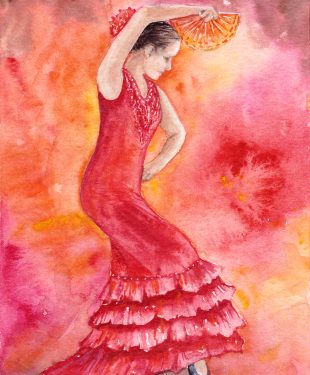Spanish siesta provides a wonderful opportunity to take a break from a demanding workday and indulge in some well-deserved rest. After a hectic morning, there’s nothing quite like unwinding in the soothing afternoon shade, accompanied by a refreshing beverage and the tranquil symphony of waves crashing on the shore. Alternatively, some find rejuvenation in a quick nap during a hot summer afternoon, while others opt for engaging in more active pursuits away from work.
Originally conceived as an escape from the scorching summer sun for farmers, the Spanish Siesta was typically observed from 2 to 5 pm. Over time, the afternoon nap evolved into a cherished tradition, while still preserving the essential concept of taking a break after a busy morning, valued for its calming effects. It is perceived as a unique means of revitalizing both the mind and body. In this article, we will explore the origins of the Spanish siesta and its significance in today’s dynamic lifestyles.
The Spanish Siesta: Exploring Its Origins and Significance
The Spanish siesta is one of the country’s most well-known customs. It is a 20 to 30-minute afternoon sleep, usually taken after lunch. Farmworkers used to slumber during the warmest hours of the day. Many Spaniards worked in agriculture until the mid-twentieth century, and the siesta was a typical ritual. It was vital to take a rest after lunch to avoid burnout.
The term “siesta” comes from the Latin “hora sexta,” which means “sixth hour” when counting from sunrise. The custom roughly corresponds to a midday nap. The siesta, once a beloved Spanish tradition, has been gradually disappearing from daily routines, owing primarily to Spain’s urbanization. As people moved to cities in search of work, finding time for a midday nap became more difficult.
Despite its decline, the custom is still widely known. Many people still associate the Spaniard lifestyle with long afternoon naps, sunbathing, and sipping wine. Most Spaniards rarely have the opportunity to take a siesta and have become accustomed to other forms of relaxation as a result of their busy lifestyles and demanding work environments, mostly found in urban areas.
The Evolution of the Spanish Siesta Tradition
 Even though the siesta is no longer part of many Spaniards’ daily routines, it retains cultural significance through other forms of entertainment. Most people look forward to it on weekends when they can comfortably take a short nap after lunch and think back. Nonetheless, Spaniards do not appear to be ready to abandon the siesta just yet. The country is finding new ways to enjoy the traditional midday break in modern times.
Even though the siesta is no longer part of many Spaniards’ daily routines, it retains cultural significance through other forms of entertainment. Most people look forward to it on weekends when they can comfortably take a short nap after lunch and think back. Nonetheless, Spaniards do not appear to be ready to abandon the siesta just yet. The country is finding new ways to enjoy the traditional midday break in modern times.
The Siesta & Go, Spain’s first nap cafe, is one such example. It is located in the heart of Madrid and aims to provide city workers with a quick 40 winks without requiring them to travel home. The nap café provides an opportunity for busy city workers to recharge and refresh themselves during working hours. It provides a peaceful and comfortable setting for a quick nap, complete with private cabins and soft lighting. In a world that often prioritizes productivity over rest, the nap café serves as a welcome reminder of the value of taking time for oneself.
Redefining the Modern Version of Spanish Siesta
While the siesta is increasingly vanishing in many parts of Spain, there are still places where it is highly valued and actively preserved. Highly effective workers appreciate the need of taking a midday break and the fundamental worth of relaxation in the modern era. For them, the siesta is more than just a nap; it is a way of life and an essential component of a bigger strategy to achieve remarkable results.
Traditionally associated with rest, the siesta has also become an opportunity for simple and accessible recreation. One popular option amongst locals is playing at no-deposit bonus casinos in Spain. This form of entertainment has provided many people with an excellent outlet during their siesta time. Scientific research supports the benefits of midday breaks, including the Spanish siesta, on both productivity and mental well-being, irrespective of how the time is spent. A well-timed siesta allows individuals to recharge and return to work feeling revitalized and rejuvenated, ready to tackle challenges with renewed focus.
Final Thoughts
A siesta or relaxation time is an excellent way to prioritize your well-being, whether you prefer a midday nap or simply taking well-timed breaks to engage in activities that take you off the stressors of the day. Even if it takes different forms that complement the concept, a siesta is still a crucial component of maintaining happiness, health, and productivity. Because of its efficacy as a productivity booster, it is worthwhile to teach current and future generations about it.
Read more lifestyle articles at ClichéMag.com
Images provided by BingAI, Adobe Stock, Flickr, Unsplash, Pexels, Pixabay & Creative Commons




